What’s Happening Here?
Let’s start off this week with a little diagnostic challenge. I hope you’ve got a keen eye and your thinking caps on. I suspect this one may be a bit more challenging than some of the others I’ve posted.
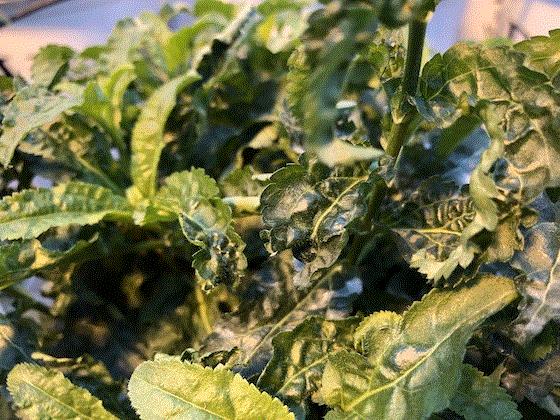
Here’s a nice-looking crop of veronica. Well, almost—I mean the leaves have a nice green coloration, but something’s not quite right with this plant. As you can see, the leaves are crinkled. In my usual fashion, I’m not going to give you any further clues, except I will say that the crinkling isn't due to genetics (sorry if you were looking for a naturally crinkled veronica cultivar).
So it’s time for me to ask, “What’s happening here?” Take your time and enjoy the newsletter and I’ll reveal the answer before signing off.
This issue’s diagnostic challenge is courtesy of Laura Robles of Walters Gardens. Thank you for sharing this with us, Laura.
Perennial Production Pitfalls
If you like the diagnostic challenge above, here’s a FREE webinar you won’t want to miss. Laura Robles, Trials Manager at Walters Gardens, is going to cover the topic of “Perennial Production Pitfalls” at 1:00 p.m. Eastern/12:00 p.m. Central on Thursday, March 7, 2019.
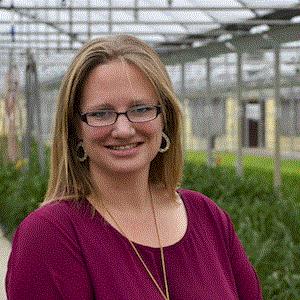
Laura will focus on many of the common issues growers face while producing perennials. And she doesn’t stop there—Laura will also provide some practical, proven solutions for dealing with these perennial dilemmas.
This FREE webinar is generously sponsored by Walters Gardens and is a must-see for both novice and experienced growers. Click here to register.
Benefits of HydraFiber
It’s March Madness! GrowerTalks isn’t stopping with just one great FREE webinar in March; they’re offering two great FREE educational opportunities.
The second webinar of the month, titled “Making the Better Mix: Wood Fiber Research and the Benefits of Adding HydraFiber,” is happening at 1:00 p.m. Eastern/12:00 p.m. Central on Thursday, March 14, 2019.
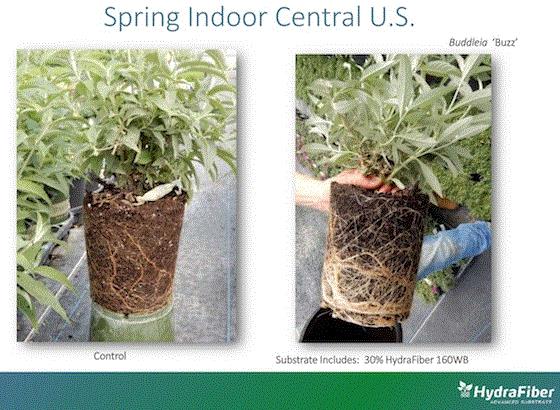
Come join Dr. Glenn Fain of Auburn University and Daniel Norden of Profile Products as they discuss the viability of using wood fiber in container substrates. Dr. Fain will discuss the latest findings on wood substrates and walk us through the evolution of wood fiber in growing mixes. Daniel will demonstrate how HydraFiber's innovative technology helps growers to produce high-quality, cost-effective crops.
Click here to learn more about this great FREE webinar sponsored by Profile Products.
The Year of Salvia nemorosa
|
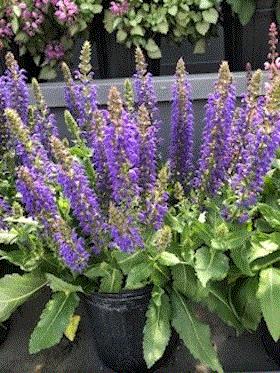
Salvia April Night
|
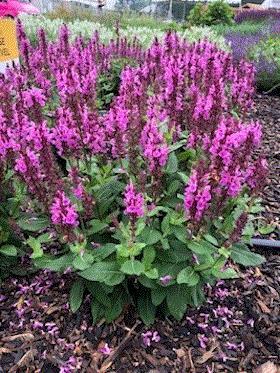
Salvia Rose Marvel
|
The National Garden Bureau has named 2019 the year of Salvia nemorosa. Perennial salvias are incredibly popular and are widely used in landscapes across the country. Just how popular are they? According to the 2014 U.S. Census of Horticultural Specialties, salvia is ranked as the fourth highest-selling perennial in the U.S. (over 4.2 million plants sold).
There are numerous Salvia nemorosa cultivars on the market, ranging from industry mainstays such as May Night to earlier bloomers like April Night to cultivars with larger and extra long-lasting flowers like Blue Marvel. Flower colors range from light to indigo blue, but also include various shades of pink, violet and white.
Salvias have a good garden presence and are generally easy to grow. They're highly attractive to pollinators, but not so appealing to rabbits and deer. With hardiness to Zone 3, most of us can enjoy the year of Salvia nemorosa.
Visit the National Garden Bureau website to learn more history and fun facts about perennial salvia and to download your FREE salvia presentation, fact sheets and printable signs to help you promote these great plants. Let's join the National Garden Bureau and make 2019 your Year of the Salvia nemorosa in your garden center and landscape.

Crop Protection Guide for Nursery and Landscape Plants
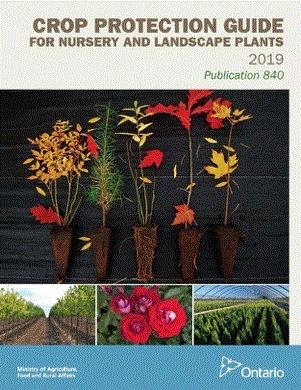
Here's a great resource for my friends north of the border. "The Crop Protection Guide for Nursery and Landscape Plants" is literally hot off the press and contains the most up-to-date information on controlling insects, mites, diseases and weeds. The book is an excellent resource for nursery growers, landscape professionals and arborists. Click here to download your copy.
The Answer is ...
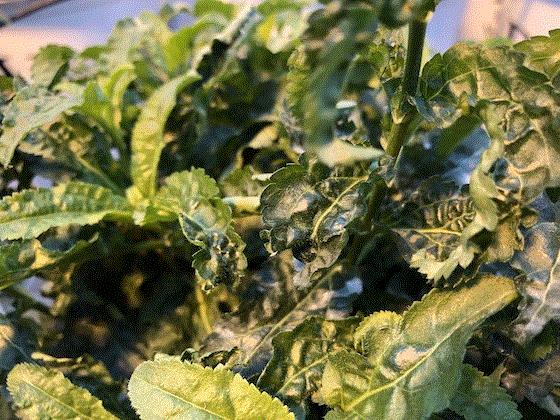
At the top of the newsletter, I showed this image and challenged you to determine the cause of the crinkling leaves. Let’s we how you did ... If your final answer was the crinkling was caused by aphid feeding, you’re a diagnostic superstar.
Without an aphid in sight, it appears the damage to this veronica occurred sometime before this image was taken. It also shows that once the aphids were detected, whatever was done to manage them was quite effective.
|
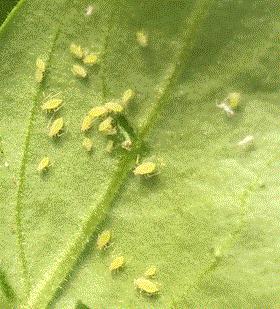
Aphids are commonly seen in groups.
|
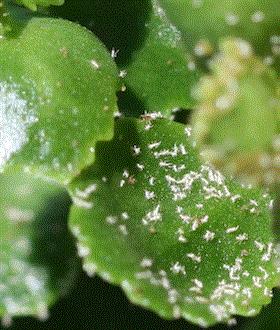
Aphid exoskletons or castings.
|
Keep in mind aphids are generally observed in large numbers on young succulent stems. Another sign of aphid activity is the presence of small white skins left behind during the molting or growth process. These skins or castings (above right) are sometimes easier to see than the live aphids themselves.
Did you like this challenge? If so, be sure to attend Laura Robles FREE “Perennial Production Pitfalls” webinar on March 7. Laura, thanks again for sharing this image. I look forward to your upcoming webinar.




Thanks for reading this edition of Perennial Pulse. Are you getting spring fever? What challenges are you anticipating this growing season? Feel free to drop me a line with any questions or article ideas you may have. You can also send me a quick "hello" anytime. I'd love to hear from you.
My email is ppilon@ballpublishing.com.
Take care,
Paul Pilon
Editor-at-Large
Perennial Pulse
This email was received by you and over 33,988 subscribers!
If you're interested in advertising in Perennial Pulse, contact Kim Brown ASAP and she'll hook you up.